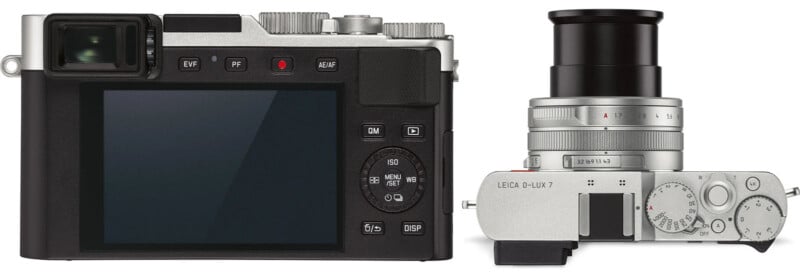The New Leica D-Lux 8 Is a Familiar Premium Camera With a Facelift
![]()
Leica Camera AG has announced the Leica D-Lux 8 compact digital camera, 21 years after the company released the very first D-Lux. Eight generations later, the D-Lux series remains popular for photographers looking for a sleek all-in-one camera. However, looking at the new D-Lux 8, it’s not clear that all that much has changed.
At the heart of the D-Lux 8 is a 21-megapixel Micro Four Thirds CMOS sensor, although only 17 megapixels are used for imaging. The sensor is paired with a Leica DC Vario-Summilux 10.9-34mm f/1.7-2.8 ASPH lens, with a 35mm equivalent focal length of 24-75mm.
![]()
If this sounds like a familiar imaging pipeline, that’s because it is. The Leica D-Lux 7, launched in late 2018, featured the same image sensor and built-in zoom lens. While the D-Lux 7 was a big step up from 2013’s D-Lux 6, it’s not evident that the D-Lux 8 represents the same kind of evolution as its predecessor.
Although there isn’t much new by way of imaging features, Leica notes that the D-Lux 8 will launch alongside a slate of new accessories, including a handgrip attachment, leather camera case, carrying straps, wrist straps, and leather half cases, which will be available in multiple colors. There are also new matching accessories, like an automatic lens cap, soft-release shutter button, hip bag, crossbody bag, and equipment bag. Leica, no stranger to stylish accessories, is going all-in on add-ons for its new D-Lux 8.
![]()
![]()
The Leica D-Lux 8 also sports a revised aesthetic compared to its predecessor, including simplified, revised controls reminiscent of the Leica Q series cameras. Where the D-Lux 7 included eight separate rear buttons, plus a four-way directional pad with each cardinal directional serving as a function button, the D-Lux 8 is heavily pared down, with just four independent buttons and a simplified directional pad.

The top deck is also slightly different, with the old “4K” button now serving as a power button and the power switch by the shutter speed dial going the way of the dodo. The exposure compensation dial is now a customizable control dial. Everything is cleaner and more straightforward, although the aspect ratio switch on the lens barrel has remained. Arguably, it was ahead of its time on the D-Lux 7, as it makes perfect sense on the D-Lux 8 in 2024, given the social media-fueled world of content-sharing photographers live in these days.
Speaking of sharing, the Leica D-Lux 8 works seamlessly with the impressive Leica Fotos app, meaning photographers can wirelessly send images from their camera to their phone and share them almost instantly on social media platforms.
As for sharing video, while Leica hasn’t specified the D-Lux 8’s video features, it is safe to assume that it will offer the same 4K/30p recording as its predecessor. Similarly, users should expect the same 2.76-million dot EVF, 11 frames per second continuous shooting, and ISO range (200-25,600).
![]()
The Leica D-Lux 8 will be available starting July 2 at all Leica Stores and authorized retailers. The camera is available to preorder now for $1,595 and includes an optional add-on flash unit.
Our Take
It is disappointing to see the same sensor and lens combination in the new Leica D-Lux 8, nearly six years after the D-Lux 7 hit store shelves. However, that camera is tough to find, and the premium compact camera market is booming. For example, it is hard for photographers to get their hands on the Fujifilm X100VI and Ricoh GR III cameras because they are so popular, so perhaps Leica thought the time was right to renew its focus on the sub-full-frame compact camera market. It’s a smart move.
The D-Lux 8 also emphasizes Leica Fotos compatibility and modern Leica styling, so it certainly has some newness, even if its internal components aren’t cutting-edge.
For people looking for Leica quality and “feel” in an all-in-one camera, there is also the excellent full-frame Q3, but that’s $5,995. The D-Lux 8 certainly offers the outward appearance of the Q3, albeit at a much more accessible price point. The sensor and lens, while old and not entirely unique to Leica — hello, Panasonic LX100 II — should deliver solid all-around performance, especially in good light.
We’re certainly looking forward to getting our hands on the D-Lux 8, and when it comes to all-in-one compact cameras, the more, the merrier, even if $1,595 is a lot to charge for a camera built on old technology. That said, a camera is much more than its specifications.
Image credits: Leica